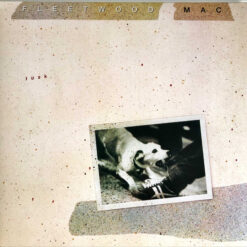-
×
 Michael Jackson "HIStory Continues" (Ltd. Ed)
1 × $60.00
Michael Jackson "HIStory Continues" (Ltd. Ed)
1 × $60.00 -
×
 Lady Gaga "Dawn Of Chromatica"
1 × $50.00
Lady Gaga "Dawn Of Chromatica"
1 × $50.00 -
×
 Led Zeppelin "Physical Graffiti" (40th Anniversary Ed.)
1 × $72.00
Led Zeppelin "Physical Graffiti" (40th Anniversary Ed.)
1 × $72.00 -
×
 Def Leppard "Diamond Star Halos" (Ltd. Ed.)
1 × $60.00
Def Leppard "Diamond Star Halos" (Ltd. Ed.)
1 × $60.00 -
×
 Bruno Mars "Doo-Wops & Hooligans"
1 × $32.00
Bruno Mars "Doo-Wops & Hooligans"
1 × $32.00 -
×
 Michael Jackson “Thriller” (Picture Disc)
2 × $40.00
Michael Jackson “Thriller” (Picture Disc)
2 × $40.00 -
×
 Fleetwood Mac "Tusk"
1 × $48.00
Fleetwood Mac "Tusk"
1 × $48.00 -
×
 Led Zeppelin "III"
1 × $40.00
Led Zeppelin "III"
1 × $40.00 -
×
 Outkast "ATLiens" (25th Anniversary Ed.)
1 × $85.00
Outkast "ATLiens" (25th Anniversary Ed.)
1 × $85.00 -
×
 Bruno Mars "24K Magic"
1 × $32.00
Bruno Mars "24K Magic"
1 × $32.00 -
×
 Public Enemy "What You Gonna Do When The Grid Goes Down"
2 × $40.00
Public Enemy "What You Gonna Do When The Grid Goes Down"
2 × $40.00 -
×
 Jack Harlow "That's What They All Say"
1 × $21.99
Jack Harlow "That's What They All Say"
1 × $21.99 -
×
 Eminem "Music To Be Murdered By - Side B" (Deluxe Ed.)
2 × $75.00
Eminem "Music To Be Murdered By - Side B" (Deluxe Ed.)
2 × $75.00 -
×
 Trans-Siberian Orchestra "The Christmas Attic" (25th Ann. Ed.)
1 × $55.00
Trans-Siberian Orchestra "The Christmas Attic" (25th Ann. Ed.)
1 × $55.00 -
×
 Tupac "Until The End Of Time" (20th Anniversary Ed.)
1 × $115.00
Tupac "Until The End Of Time" (20th Anniversary Ed.)
1 × $115.00 -
×
 Rob Thomas "Something About Christmas Time" (Red)
1 × $38.00
Rob Thomas "Something About Christmas Time" (Red)
1 × $38.00 -
×
 Notorious B.I.G. "Life After Death"
1 × $58.00
Notorious B.I.G. "Life After Death"
1 × $58.00 -
×
 Cher "Christmas" (Ruby Red)
1 × $45.00
Cher "Christmas" (Ruby Red)
1 × $45.00 -
×
 Elvis "Elvis Sings The Wonderful World Of Christmas"
1 × $35.00
Elvis "Elvis Sings The Wonderful World Of Christmas"
1 × $35.00 -
×
 Andrea Bocelli "A Family Christmas"
1 × $38.00
Andrea Bocelli "A Family Christmas"
1 × $38.00 -
×
 DMX "The Legacy"
1 × $45.00
DMX "The Legacy"
1 × $45.00 -
×
 Chicago "Greatest Christmas Hits" (Green)
1 × $42.00
Chicago "Greatest Christmas Hits" (Green)
1 × $42.00 -
×
 Joss Stone "Merry Christmas, Love"
1 × $38.00
Joss Stone "Merry Christmas, Love"
1 × $38.00 -
×
 AC/DC "High Voltage"
1 × $38.00
AC/DC "High Voltage"
1 × $38.00 -
×
 Pink Floyd "More" (Soundtrack)
1 × $35.00
Pink Floyd "More" (Soundtrack)
1 × $35.00
Pop/Hip Hop/R&B
C Major Piano Chords & Notes – Key of C
C Major is one of the most popular keys in music. It’s a key that’s often used in piano music, particularly in pop and classical music. C Major is a great key to start learning piano chords and notes, as it is easy to understand and play. It consists of three chords – C Major, F Major, and G Major – and five notes – C D E F G A. These chords and notes create a strong, bright sound that can be used to create beautiful melodies. Learning C Major chords and notes will equip you with the tools necessary to create your own music on the piano.
Learning to play the piano can be a fun and rewarding experience. Taking the time to learn the basics of C major piano chords and notes is a great place to start. This step-by-step guide will provide you with all the information you need to get started.
The C major scale is the basis for all major chords and scales. It consists of the notes C, D, E, F, G, A, and B. The first chord we will learn is the C major chord. This chord is made up of the notes C, E, and G. To play the C major chord, press down the keys C, E and G at the same time.
The next chord is the D minor chord. This chord is made up of the notes D, F, and A. To play the D minor chord, press down the keys D, F and A at the same time. The third chord is the E minor chord. This chord is made up of the notes E, G, and B. To play the E minor chord, press down the keys E, G and B at the same time.
The fourth chord is the F major chord. This chord is made up of the notes F, A, and C. To play the F major chord, press down the keys F, A and C at the same time. The fifth chord is the G major chord. This chord is made up of the notes G, B, and D. To play the G major chord, press down the keys G, B and D at the same time.
The sixth chord is the A minor chord. This chord is made up of the notes A, C, and E. To play the A minor chord, press down the keys A, C and E at the same time. The seventh chord is the B diminished chord. This chord is made up of the notes B, D, and F. To play the B diminished chord, press down the keys B, D and F at the same time.
Once you have mastered the basics of C major piano chords and notes, you can start playing a variety of songs. Having a good knowledge of chords and notes will make it much easier for you to play any song you like. Good luck on your musical journey!
Learning piano chords and notes can be a great way to improve your musical skills and better your understanding of music theory. C Major is one of the most commonly used keys in music, and learning its chords and notes can provide a wide range of benefits.
The first benefit to learning C Major piano chords and notes is the ability to play many popular songs. Songs in the key of C Major are very common in the world of pop music and also have an influence on other genres such as jazz and classical. Knowing the chords and notes of C Major can help you to quickly learn and play many popular songs.
Another benefit of learning C Major piano chords and notes is that it provides a great foundation for further study of music theory. The chords and notes of C Major form the basis of many other keys and can be used to understand more complex concepts. Furthermore, understanding C Major can help you to transpose songs into different keys, which is a valuable skill for any musician.
Finally, learning C Major piano chords and notes can be a great way to develop your finger dexterity and overall piano technique. As you practice the chords and notes of C Major, you will become more comfortable with the layout of the piano and develop the skills necessary to play more complicated pieces.
In conclusion, learning C Major piano chords and notes has many benefits, from the ability to play popular songs to the development of music theory knowledge and piano technique. Therefore, it is a great skill for any aspiring musician to learn.
Playing creative chord progressions in the key of C major can be a fun and rewarding experience for the aspiring musician. To begin, it is important to understand the basic structure of C major. This key consists of seven distinct chords: C, Dm, Em, F, G, Am, and Bdim. Knowing these chords is essential for creating interesting and unique chord progressions.
To create a chord progression in C major, start by selecting one of the seven chords as the tonic (or root note). This note will be the foundation of the progression and will be the point of reference for the other chords. After selecting a tonic, the next step is to select a chord to follow it. This chord should be selected based on the desired sound or emotion that the musician wishes to evoke.
When creating a chord progression, it is important to select chords that are part of the same key. This ensures that all of the chords will harmonize in a pleasing manner. A common trick is to select chords that are one or two steps away from the tonic. This allows for a smooth transition between the chords. It can also be helpful to use various chord inversions to create a more interesting sound.
In addition to selecting the chords for a chord progression, it is important to decide on the rhythm and length of the progression. This will depend on the desired sound and can be altered by changing the tempo or using different note lengths. It can also be helpful to switch between major and minor chords to add variety and interest.
By understanding the basic principles of chord progressions and experimenting with different chords, rhythms, and note lengths, musicians can create beautiful and unique chord progressions in C major. This can be a great way to enhance any musical piece, and can be a fun and rewarding experience for the music enthusiast.
The C Major scale is one of the most popular keys in piano music, and the chords and notes it produces are used in a variety of compositions. In this article, we will analyze the most popular C Major piano chords and notes and discuss how they are used in contemporary music.
The C Major scale consists of eight notes, ranging from C to C, and is the most basic major key. The first chord of the scale is the tonic or root chord, which is simply a C major triad. This chord consists of three notes, C, E, and G. It is often used as the foundation for both major and minor key progressions.
The next most popular chord in the C major scale is the subdominant chord, which consists of the notes F, A, and C. This chord is often used to create a feeling of tension when leading up to the tonic. Additionally, the subdominant can be used as a substitute for the tonic in some cases.
The third chord in the C major scale is the dominant chord, which consists of the notes G, B, and D. This chord is used to create a feeling of resolution and is often used to lead back to the tonic chord. Additionally, it is used as a bridge between two tonic chords in the same key.
The fourth chord in the C major scale is the submediant chord, which consists of the notes A, C, and E. This chord is used to create a feeling of suspension and can also be used to lead back to the tonic.
Finally, the fifth chord in the C major scale is the mediant chord, which consists of the notes B, D, and F. This chord is often used to create a feeling of resolution and is also used as a substitute for the tonic chord.
In addition to the chords discussed above, there are two other notes in the C major scale that are commonly used in piano music. The first is the seventh note of the scale, which is B. This note is known as the leading tone and is used to create a feeling of tension when leading up to the tonic. The second is the fourth note of the scale, which is F. This note is known as the subtonic and is used to create a feeling of resolution when leading back to the tonic.
In conclusion, the C major scale is one of the most popular keys in piano music and the chords and notes it produces are used in a variety of compositions. The five most popular chords in this key are the tonic, subdominant, dominant, submediant, and mediant chords. Additionally, two other notes in the scale, the seventh and fourth notes, are also commonly used in piano music. By understanding how these chords and notes are used, one can gain a better understanding of contemporary piano music.
Creating music with C major piano chords and notes can be an enjoyable and creative experience. This tutorial will provide an introduction to the basics of playing these chords and notes, and how to create your own melodies.
When playing C major on the piano, the right hand plays the chords while the left hand plays the notes. It is important to understand the notes and chords of C major, as well as the order in which to play them.
The C major scale is composed of the notes C-D-E-F-G-A-B-C, and the chords are C-Dmi-Emin-F-G-Ami-Bdim-C. To play a C major chord, the notes C-E-G must be played. To play a D minor chord, the notes D-F-A must be played. Each of the other chords of the scale have specific notes that must be played in order to create the chord.
When creating music with C major piano chords and notes, it is important to understand the concept of chord progressions. This is a pattern of chords that are played in a particular order. It is important to choose the right chords to create the desired sound.
Once you have chosen your chords, it is time to add melody. The melody should be created by playing the notes of the chords in a certain order. To create a basic melody, start by playing the root note of the chord, followed by the third note, and then the fifth note. This creates a simple melody that can be repeated and varied upon.
When creating a more complex melody, it is important to consider how the chords and notes relate to one another. For example, the notes of a C major chord should be used to create a melody that is harmonious with the chord progression.
Once you have created your melody, it is important to practice it until it is perfected. This will help you to become more familiar with the chords and notes of C major, and you will be able to create more complex melodies.
By following these steps, you can create your own melodies with C major piano chords and notes. With practice, you can create beautiful and unique music that will bring joy to others.
The C Major scale is one of the most commonly used scales in music, and is the first scale most people learn when beginning to play the piano. Understanding the fingerings for the notes and chords of this scale is an essential skill for any aspiring pianist.
When playing the C Major scale on a piano, the notes are C, D, E, F, G, A, and B. To play the scale correctly, the thumb of your right hand should be placed on C while the other fingers should fall on the notes in the following order: middle, ring, index, middle, ring, and index.
The C Major chord can be formed by playing the notes C, E, and G together. This is generally done with the thumb, middle, and ring fingers of the right hand, respectively. It is important to remember that the thumb should always be placed on the lowest note of the chord.
When playing the C Major chord, you may also want to add a seventh note to the chord. To do this, you will need to add the B note to the chord. This is generally done with the index finger of the right hand and should be placed on the note directly above the G note.
As a pianist, it is important to practice these fingerings regularly in order to become comfortable with them. With time and practice, you will be able to play any C Major chord or scale with ease.
In conclusion, C Major piano chords and notes are a foundational element of music. With a wide variety of chords and notes available, it is possible to create a range of sounds and styles. Learning the basics of C Major piano chords and notes is essential for aspiring musicians, and can lead to the development of a variety of skills to create beautiful music.
Source link

